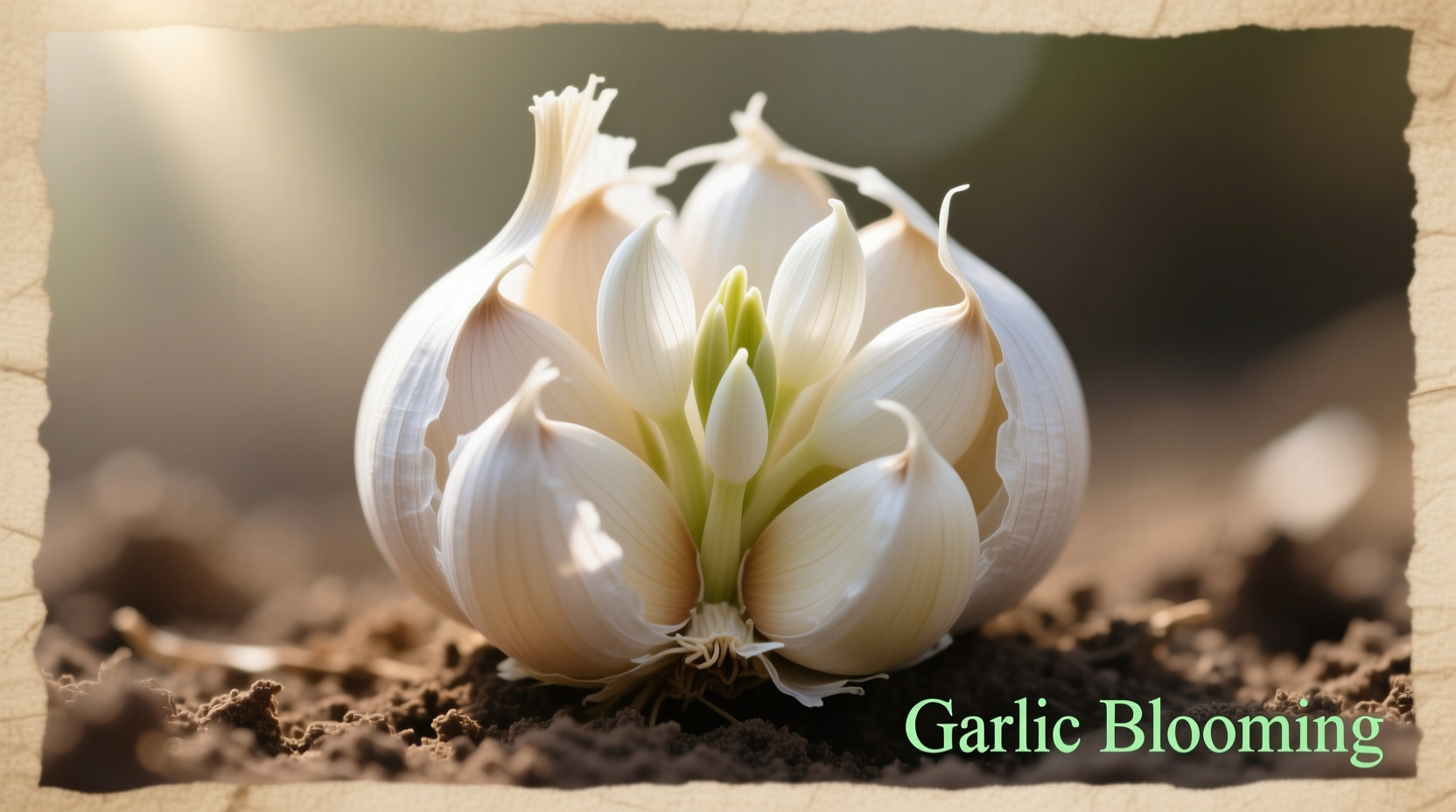Garlic blooming occurs when hardneck garlic varieties produce flower stalks (scapes) in late spring, typically 30-60 days before harvest. Removing these scapes redirects energy to bulb development, resulting in 20-30% larger bulbs. The optimal time for scape removal is when they form their first complete loop but remain tender.
Understanding Garlic Blooming: What Every Gardener Needs to Know
When your garlic plants send up curly green stalks in late spring, you're witnessing the garlic blooming process. This natural stage in garlic's growth cycle directly impacts your harvest quality and quantity. Whether you're growing garlic in your backyard garden or managing a small farm, understanding how to respond to blooming garlic makes the difference between average and exceptional bulbs.
What Exactly Is Garlic Blooming?
Garlic blooming refers to the production of scapes—the curly, flower-bearing stalks that emerge from hardneck garlic varieties. These scapes eventually develop into bulbils (tiny aerial cloves) if left to mature. Unlike softneck varieties that rarely produce scapes, hardneck garlic always goes through this blooming phase under proper growing conditions.

Why Garlic Blooms Matter for Your Harvest
When garlic begins blooming, the plant faces an energy allocation decision: should it direct resources toward flower and seed production or bulb development? This biological choice directly impacts your harvest:
| With Scapes Removed | With Scapes Left Intact |
|---|---|
| 20-30% larger bulb size (Cornell University Research) | Smaller bulb size due to energy diversion |
| More uniform clove formation | Potentially irregular clove development |
| Earlier harvest readiness | Slightly delayed maturity |
| Additional culinary product (scapes) | No edible scape harvest |
The Critical Timeline: When to Act on Blooming Garlic
Timing your response to garlic blooming is crucial. The growth progression follows this predictable pattern:
- Mid-Spring: Garlic plants reach full leaf development (6-8 leaves)
- Late Spring (May-June depending on climate): Scapes emerge and begin curling
- Optimal Removal Window: When scapes form first complete loop but remain tender (typically late May in Zone 5-6)
- Post-Removal: Bulb development accelerates for 30-45 days
- Harvest Time: When lower third of leaves yellow (late July-August)
According to the University of Minnesota Extension, missing the scape removal window by just one week can reduce bulb size by up to 15%. The plant's energy allocation becomes increasingly committed to flower development as scapes mature and harden.
Step-by-Step: Managing Blooming Garlic Like a Pro
Step 1: Identify Your Garlic Type
Before taking action, confirm you're growing hardneck garlic (which produces scapes). Softneck varieties rarely bloom and don't require this intervention. Hardneck varieties include:
- Rocambole (most vigorous scaping)
- Porcelain
- purple stripe varieties
Step 2: Monitor Daily During Blooming Season
Check your garlic patch every 1-2 days once plants reach full leaf development. Scapes emerge rapidly—sometimes growing several inches per day during warm spells.
Step 3: Remove Scapes at Perfect Timing
Cut scapes when they've made their first complete loop but remain tender enough to snap easily. Use clean garden snips to cut 1-2 inches above the top leaf:
- Too early: Plant may produce secondary scapes
- Too late: Energy already diverted to flower development
Step 4: Utilize Your Harvested Scapes
Don't waste these delicious byproducts! Garlic scapes offer:
- Mild garlic flavor without harshness of mature cloves
- Versatility in pesto, stir-fries, and grilling
- Extended freshness (2-3 weeks refrigerated)
When NOT to Remove Garlic Scapes
While scape removal generally benefits bulb development, specific situations call for different approaches:
- Seed production: If collecting bulbils for future planting, allow scapes to mature completely
- Softneck varieties: These rarely produce scapes; no action needed
- Extreme stress conditions: During severe drought or pest infestation, the plant may need all available energy
- Experimental growing: Some growers intentionally leave scapes to compare bulb development
The Oregon State University Extension notes that in regions with short growing seasons, leaving scapes intact might actually benefit bulb development by extending the photosynthetic period.
Common Mistakes That Reduce Your Garlic Yield
Even experienced gardeners make these critical errors when handling blooming garlic:
- Mistake: Waiting until scapes harden and straighten
Solution: Remove when still tender and curled - Mistake: Cutting too close to the leaves
Solution: Leave 1-2 inches of scape above top leaf to avoid damaging plant - Mistake: Removing scapes during hottest part of day
Solution: Harvest in early morning when plants are hydrated - Mistake: Discarding scapes instead of using them
Solution: Treat scapes as valuable secondary harvest
Maximizing Your Garlic Harvest Through Proper Blooming Management
Understanding and properly managing garlic blooming transforms your harvest. By removing scapes at the optimal time, you redirect the plant's energy to bulb development while gaining an additional culinary product. This simple intervention, performed correctly, consistently delivers larger, more uniform bulbs with better storage potential.
Remember that regional climate variations affect exact timing—gardeners in warmer zones may see scapes emerge weeks earlier than those in cooler regions. Local agricultural extension services provide the most precise timing recommendations for your specific area.











 浙公网安备
33010002000092号
浙公网安备
33010002000092号 浙B2-20120091-4
浙B2-20120091-4